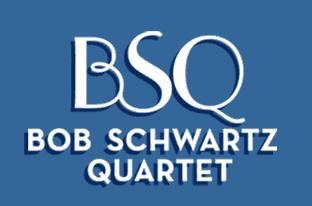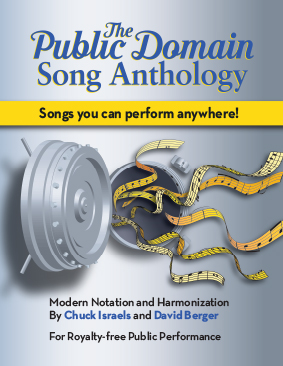
Help Produce The Public Domain Song Anthology
As An Open Educational Resource.
Every week I practice copyright law; every weekend I lead my jazz quartet in performing copyrighted and public domain music. A lot of wonderful, valuable American music is already in the public domain, but most of it is not easily accessible to musicians, and is on the way to becoming unknown to music students. When a local restaurant chain stopped having live music because it could not afford to pay ASCAP, my (law and bass) colleague Seth Greenstein and I discussed the problem with Prof. Peter Jaszi, founder of the Glushko-Samuelson Intellectual Property Law Clinic, and prominent musicians and educators David Berger, the founding conductor of Jazz At Lincoln Center, and Chuck Israels, bassist with Bill Evans and founder of the National Jazz Ensemble. The solution we hit on was a 400+ song, 800+ page, Public Domain Song Anthology (aka, by musicians, “fakebook”).
The anthology will be two pages per song because it will include both traditional and modern harmonizations by two of the handful of musicians expert and experienced in both milieus. The Clinic will attest that all of the music is public domain, so that the music from the book can be performed anywhere without burden or threat, and the authors are free to give away the book. And starting with a 2019 edition there would be annual supplements of the classic songs that, in 2018, will be entering the public domain.
With a very small amount of seed money and a large helping of risk, commitment, and enthusiasm by David and Chuck, the book is nearing completion except for extensive digital software scoring and corrections, which will take a few months and require new cash outlays. If and when completed they can and will, if necessary, sell the book on-line as a .pdf and hope for the best. They could try by various means to protect their investment—they’ve contributed elements that arguably may be copyrightable. But they and we would strongly prefer that, for the benefit of the students and musicians we all wish to reach (and our public domain commitment) the book be distributed at marginal cost, or ideally as an “Open Educational Resource (OER).”
The ways we’ve explored to support this project are:
- Crowd-funding
- Corporate sponsorship
- Educational / library support as an OER
I was not familiar with the term “Open Educational Resource” until Peter offered me a slot to talk about the project at a recent WCL seminar celebrating his career and achievements. From interested library and legal friends, I learned:
OER = FREE.To the student, the public, the world (wherever also PD). Use it, build on it, perform it, share it, it’s in the public domain!
The educational potential of making this 800+ page book of notation and alternative harmonizations free is overwhelming. What self-respecting music program, at any grade level, here and abroad, would want to be without it? But OER publication also poses a big challenge to our original plans for compensating the authors:
- Crowd-funding by music fans isn’t going to raise enough.
- Corporate / institutional sponsorship would require more than I’ve quoted to folks.
- If offered as a two-volume physical book as well as e-book from which desired pages could be printed, the printing and distribution expense would be considerable.
What will this cost? I’ve told legal and library colleagues that I’m not going to negotiate on behalf of my music friends, who make their living writing, arranging, and transcribing music that is no longer widely popular. So I can’t say now what it will cost to acquire all rights to this book plus x number of annual supplements. But I can discuss possible parameters, including the cost of getting it finished—call me.
Ideally, a single institution or company will offer to acquire this book and distribute it electronically and/or physically in the public interest. We’ve discussed possible grants or a consortium among interested institutions—an excellent outcome but one, I’m advised, that could take appreciable time while the authors wait and need to be paid. There are also, as noted, some interim solutions.
We’ve got follow-up discussions scheduled with good folks who have expressed interest. If you’d like to be a part of getting this done, can offer sponsorship, or have ideas, please let me know ASAP. We can both preserve and update our musical heritage—the roots of the Great American Songbook.
Robert S. Schwartz
Constantine Cannon LLP
RSchwartz@constantinecannon.com
202-204-3508

Draft book cover design by Nina Schwartz
(Each staff is from an included song.)
From David Berger’s preface:
“This collection contains over 400 great folk and popular songs written before 1923 that generations of Americans grew up singing and playing. They formed the basis of our musical understanding, laying the foundation for our appreciation of the more sophisticated genres of Classical Music, Broadway, American Songbook and jazz. This is our musical heritage.”
Chuck Israels explains (when we were up to 300 tunes) the importance of knowing this Public Domain music.
David Berger contrasts original and modern harmonizations of Jerome Kern’s 1919 Look For The Silver Lining.